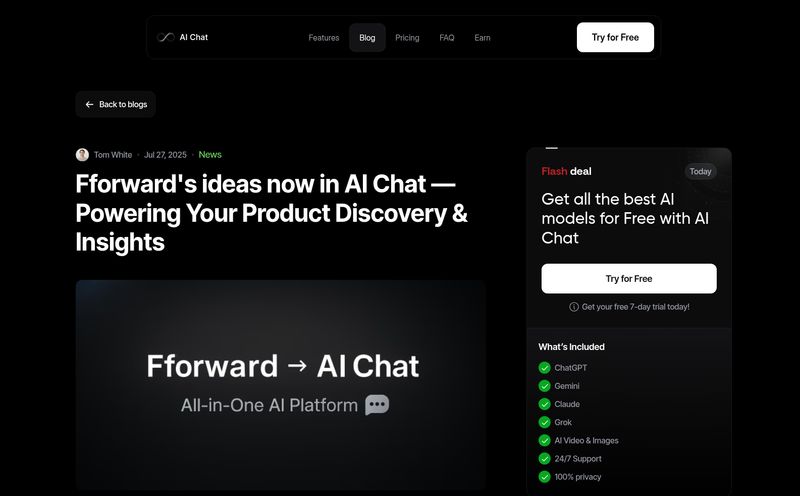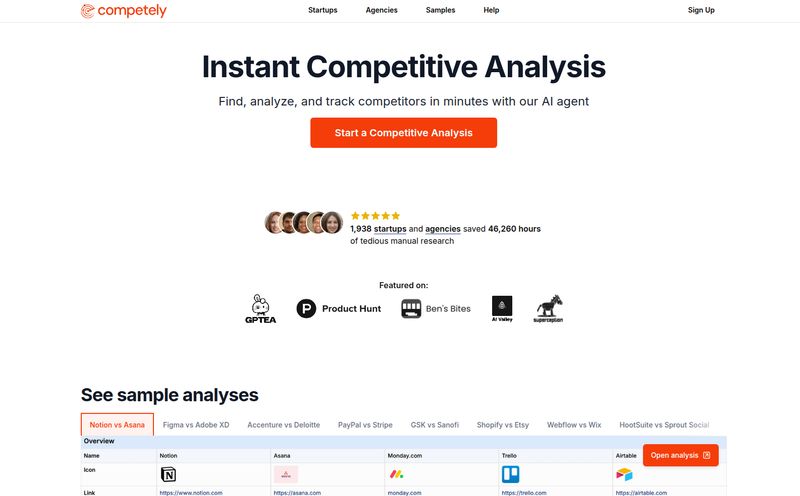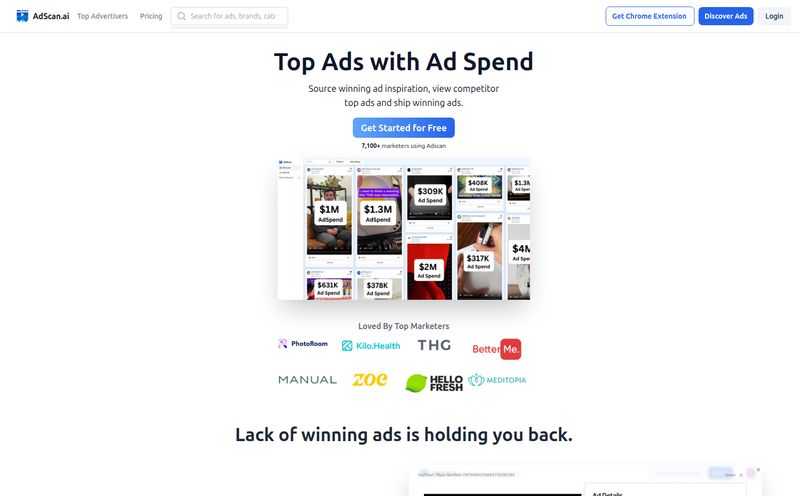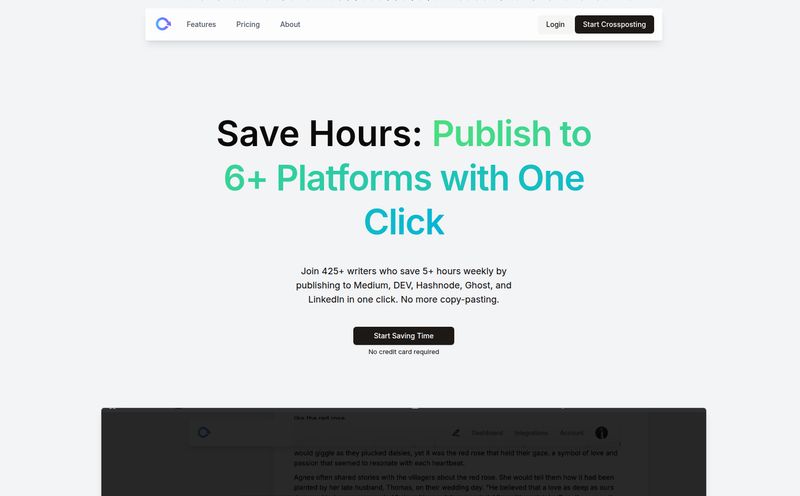Let’s talk about supply chains. For years, the whole process has felt like a giant, messy game of telephone. You whisper an order at one end, and what comes out the other end... well, it’s anyone’s guess. Miscommunications, delays, quality issues, a total lack of visibility. It's the stuff of nightmares for anyone in retail, apparel, or manufacturing. I've seen it cripple businesses firsthand.
We’ve all been searching for that silver bullet. That one thing that can untangle the mess. And lately, a name that keeps popping up on my radar is Inspectorio. They’re making some big promises about using AI to bring performance, resilience, and intelligence to the supply chain. But as we all know, in the world of B2B software, talk is cheap. So, I decided to do a proper deep dive. Is this just another platform with a slick website, or is there something genuinely transformative here?
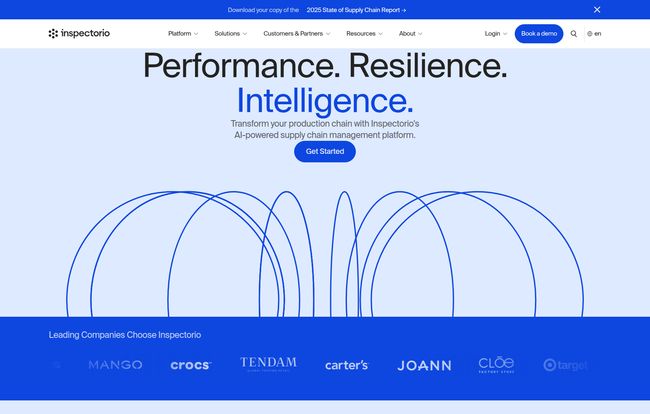
Visit Inspectorio
So, What Is Inspectorio, Really?
Forget the corporate jargon for a second. At its core, Inspectorio is a networked platform designed to connect every single player in your supply chain. Think of your traditional supply chain as a bunch of separate, locked rooms. Your factory is in one, your compliance auditors are in another, your raw material suppliers are in a third. They might slide notes under the door, but nobody has a full view of what's happening. It's chaos.
Inspectorio aims to knock down those walls and create one big, open-plan workspace. It’s less like a series of disjointed emails and spreadsheets and more like a shared, living project board where everyone—from the brand HQ to the factory floor—sees the same data in real-time. This interconnectedness is the foundation for everything else they do.
The Core Pillars of the Platform
Inspectorio isn’t just one tool; it’s a suite of solutions that tackle the biggest headaches in the production process. They seem to understand that you can't just fix one part of a broken chain.
Moving Beyond Reactive Quality Control
Traditionally, quality control is a post-mortem. You find the defects after they've been made, leading to wasted time, money, and materials. Inspectorio’s approach to Quality Risk Management is all about being proactive. It uses data from past inspections and production runs to predict where problems are likely to occur. It’s like having a crystal ball that tells you, “Hey, Factory B often has issues with stitching on this specific product type during rainy season.” That allows you to focus your attention where it's needed most, before it becomes a five-alarm fire.
Making Responsible Sourcing a Reality
These days, consumers—and regulators—care a lot about where their stuff comes from. Was it made ethically? Sustainably? Answering these questions is a massive challenge. The Responsible Sourcing & Compliance module helps manage all those audits and certifications. It digitizes the process, making it easier to track compliance across hundreds of suppliers and ensure your partners are upholding the standards you promise your customers. It’s no longer just a binder on a shelf; its a live dashboard of your supply chain’s health.
Finally, Real Traceability and Transparency
This is the holy grail for so many brands. Being able to trace a product from the raw material all the way to the finished good. Inspectorio’s Traceability & Transparency solution works on creating a digital thread that follows the entire production journey. This isn’t just great for storytelling in your marketing (“from farm to closet!”). It’s critical for handling recalls, verifying product claims (like organic cotton), and de-risking your operations in a world rocked by geopolitical uncertainty. Remember all those pandemic-related shutdowns? Brands with true visibility could pivot much faster.
The AI "Secret Sauce" That Powers It All
Okay, “AI-powered” is a term that gets thrown around so much it’s almost lost all meaning. But in Inspectorio's case, it seems to be more than just a buzzword. The platform collects a staggering amount of data from every interaction—inspections, audits, production updates, defect reports. The AI then churns through this data to find patterns a human could never spot.
For example, it can correlate a specific type of defect with a certain machine on a specific factory line. It can flag a supplier whose audit performance is starting to dip, even slightly, suggesting a potential risk down the line. It turns data from a historical record into a predictive tool. That's the difference maker. This is where you get the “competitive advantage” they talk about on their homepage.
Who Should Be Looking at Inspectorio?
Based on their client list—which includes heavy hitters like Carter's and Vera Bradley—this is clearly aimed at established brands, retailers, and suppliers, particularly in the Apparel, Home & Furniture, Footwear, and General Retail spaces. The platform is designed to handle complexity and scale.
That said, they do claim their solutions are scalable. A mid-sized brand drowning in spreadsheets could potentially see a massive ROI here. But let's be realistic, this is an enterprise-grade system. A solo entrepreneur making t-shirts in their garage is probably not the target audience. You need to have a supply chain complex enough to warrant this level of intelligence.
The Good, The Bad, and The Honest Truth
No platform is perfect, and from my years in this space, I know it's important to look at the full picture. Here’s my breakdown of what gets me excited and what gives me pause.
| What I Love (The Pros) | What to Keep in Mind (The Cons) |
|---|---|
| It’s a truly comprehensive platform. It’s not just solving one problem, but looking at the supply chain as a connected whole. | This is not a plug-and-play tool. Expect a significant initial investment in both time and money to get set up properly. |
| The AI-powered analytics are the real deal. Moving from reactive to predictive is a game-changer for efficiency. | Integration could be tricky. You’ll need to connect this to your existing ERP or PLM systems, which can be a complex project. |
| The focus on a networked ecosystem fosters collaboration and transparency in a way that siloed software just cant. | The platform is only as good as the data you feed it. Garbage in, garbage out. You need clean, accurate data. |
| It’s scalable. It can grow with you as your supplier base and operational complexity increases. | There will be a learning curve. Teams will need to be trained to move away from old habits (spreadsheets!) and embrace the platform. |
What About the Price Tag?
Ah, the million-dollar question. Or, hopefully, not quite a million dollars. As you might have guessed, Inspectorio doesn’t list their pricing publicly. This is standard for enterprise SaaS platforms of this magnitude. The cost will depend on a whole host of factors: the size of your company, the number of users, how many suppliers you have, which modules you need, etc.
My advice? Don’t let the lack of a pricing page scare you off. If the problems I've described resonate with you, the best next step is to contact their team for a demo. Think of it as a consultation. They can walk you through the platform in the context of your specific business and give you a custom quote. The potential ROI from catching just one major quality issue early could easily pay for the software for a year.
Frequently Asked Questions about Inspectorio
1. Is Inspectorio only for huge, multinational corporations?
Not exclusively. While it's certainly built to handle the scale of large enterprises, its modular and scalable nature means it could be a fit for growing, mid-market companies that have a complex supply network and are feeling the pain of manual processes. The key is complexity, not just size.
2. How exactly does the AI work? Is it complicated?
You don't need to be a data scientist to use it. The AI works in the background, analyzing data from inspections, audits, and production activities. It then presents its findings as simple, actionable insights—like a risk score for a factory or a recommendation to inspect a certain batch more closely. It does the heavy lifting for you.
3. Do my suppliers have to pay to use Inspectorio?
Typically, in a networked platform model like this, the brand or retailer covers the main subscription cost. Suppliers are then onboarded and can often use the platform to manage their operations and collaborate with their clients. This collaborative approach benefits everyone by creating a single source of truth.
4. What kind of implementation and support can I expect?
Given the nature of the software, you can expect a dedicated onboarding and implementation process. This isn't a self-serve tool. A platform this powerful requires a strategic rollout, including data migration, system integration, and team training, which their team would guide you through.
Final Thoughts: A Glimpse into the Future?
After digging in, I have to say, I'm genuinely impressed with the vision behind Inspectorio. It’s not just another piece of software; it's a fundamental shift in how to think about supply chains—moving from a fragmented, linear process to an interconnected, intelligent network.
Is it the right solution for everyone? No. It requires investment, commitment, and a willingness to change old workflows. But for brands and retailers who are serious about building a more resilient, efficient, and transparent supply chain, I believe Inspectorio is more than just a tool. It's a strategic weapon. In an age where the next disruption is always just around the corner, having this kind of intelligence in your corner might just be the most important advantage you can have.
Reference and Sources
- Inspectorio Official Website
- McKinsey & Company - Building more resilient and efficient supply chains
